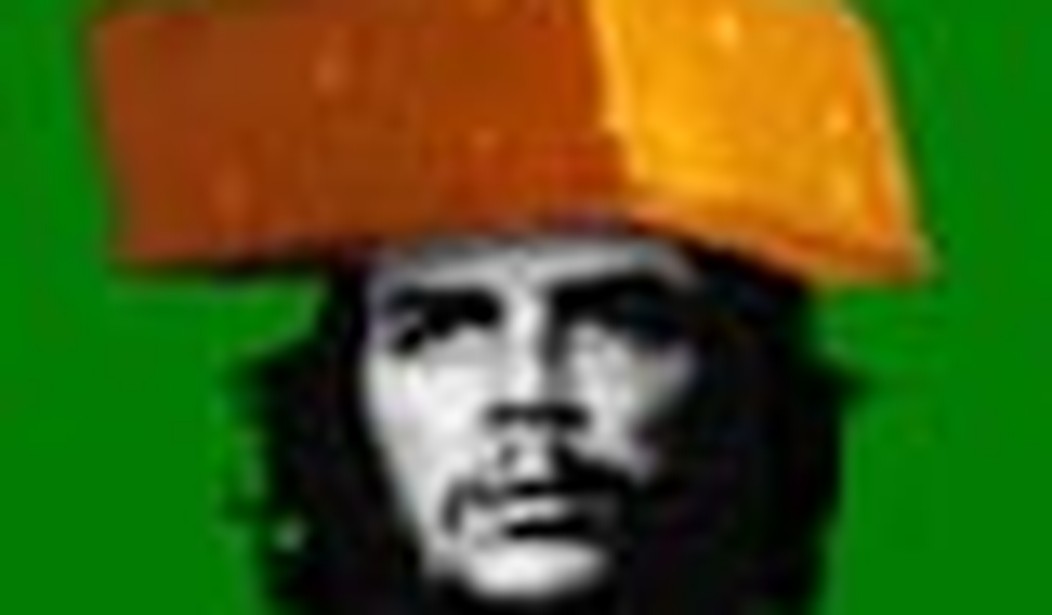Good thing he wasn’t a Tea-partier caught on camera saying he wants to vote for Mussolini and clone Pinochet!
Instead he was a union protestor in Madison, Wisconsin, caught on camera saying he wants to vote for Castro and his clone, Che Guevara.
So there’s no kerfuffle from the MSM or Democratic Party. As I recall the (utterly bogus as it turned out) use of the “N” word by Tea-partiers back in March generated quite a kerfuffle.
A much larger, violent, and protracted kerfuffle erupted in Cuba by the union members cursed by fate to live under the regime founded by Fidel Castro and Che Guevara. Don’t look for this on NPR or The History Channel, much less in your college textbooks, but among the first, the most militant, and the most widespread opposition groups to the Stalinism that Che Guevara (who often cheekily signed his named as “Stalin II”) and Fidel Castro imposed on Cuba came from Cuban labor organizations.
And who can blame them? Here’s a UNESCO (United Nations Educational, Scientific and Cultural Organization) report on Cuba circa 1957:
One feature of the Cuban social structure is a large middle class. Cuban workers are more unionized [proportional to the population] than U.S. workers. The average wage for an 8-hour day in Cuba in 1957 is higher than for workers in Belgium, Denmark, France and Germany. Cuban labor receives 66.6 per cent of gross national income. In the U.S. the figure is 70 per cent, in Switzerland 64 per cent. 44 per cent of Cubans are covered by Social legislation, a higher percentage than in the U.S.
In 1958, Cuba had a higher per capita income than Austria or Japan and Cuban industrial workers had the eighth-highest wages in the world. In the 1950s, Cuban stevedores earned more per hour than their counterparts in New Orleans and San Francisco.
Thousands of these took up arms against Fidel Castro and Che Guevara. The MRP (Movimiento Revolucionario del Pueblo) was among these Cuban resistance groups of mostly laborers. But don’t take it from me. Here’s how the FBI and CIA described them:
Heavily weighted labor membership, with socialistic leanings. Aimed for Castro overthrow from within; advocated nationalization of economy, agrarian reform, utopian social reform.
In a TV speech on June 26, 1961, when Che Guevara was Cuba’s “Minister of Industries,” he proclaimed: “The Cuban workers have to start being used to live in a collectivist regimen, and by no means can they go on strike!”
This “no strike” provision was unacceptable to Cuban laborers — many of whom took up arms in protest, along with Cuba’s enraged campesinos who rose in arms by the thousands when Castro and Che started stealing their land to build Soviet Kolkhozes.
This rebellion, involving ten times the number of rebels, ten times the number of casualties, and lasting twice as long as the puerile skirmish against Batista, found no reporter anywhere near Cuba’s hills. The Cuban campesinos’ bloody rebellion against Castro-Stalinism lasted from late 1959 to 1966. Tens of thousands of troops, scores of Soviet advisors, and squadrons of Soviet tanks, helicopters, and flame-throwers finally extinguished the lonely Cuban freedom-fight.
Everyplace else on earth reporters hail such things as “insurgencies,” and rush in to “embed” and report. Cuba’s insurgency against Stalinism was blacked-out. “We fought with the fury of cornered beasts,” recalls one of the few surviving rebels from Miami today.
According to the scholars and researchers at the Cuba Archive, the Castro regime’s total death toll — from torture, prison beatings, firing squads, machine gunning of escapees, drownings, etc. — approaches 100,000. Cuba’s population in 1960 was 6.4 million. According to the human rights group Freedom House, 500,000 Cubans (young and old, male and female) have passed through Castro’s prisons and forced-labor camps. This puts Castro and Che’s political incarceration rate right up there with their hero Stalin’s.
The result?
The Castro brothers and Che Guevara converted a nation with a higher per capita income than half the nations of Europe, the lowest inflation rate in the Western hemisphere, a larger middle class than Switzerland, a huge influx of immigrants, and the 13th lowest infant-mortality in the world into one that repels Haitians. But in the process all Cubans became subject for their very livelihood upon Castro’s every whim. Typical communist mismanagement.
Actually, given Communist goals, Cuba’s economy is expertly managed. Destroying the factors involved in Cuba’s former freedom and prosperity was not a haphazard process. It required focus and dedication, putting the shoulder to the wheel and nose to the grindstone. Castro’s “nationalist” revolution saw many of Stalin’s own henchmen directing the murder, torture and destitution of millions of native Cubans. Among the first to go were labor leaders.









Join the conversation as a VIP Member